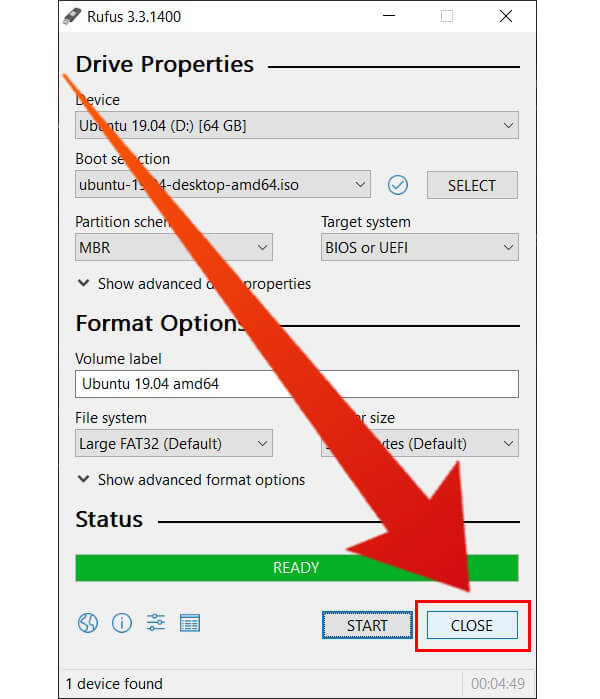
- #Ubuntu universal usb installer install
- #Ubuntu universal usb installer portable
- #Ubuntu universal usb installer windows 7
- #Ubuntu universal usb installer download
In order to open what is called a root shell, which is equivalent to the root terminal.Ģ.Ěpply and install, now it should be under the applications > system tools menu.ģ. If this does not work, go to applications > Accesories > Terminal and then type:
#Ubuntu universal usb installer install
To install go to applications > Ubuntu Software Centre and under search type ‘root terminal’. Setting up the Ubuntu environment – installing Javaġ. Wait for the USB pen to boot and select ‘run from USB’. This is done by pressing ‘Del’, ‘F10’ or some other button at first boot (black screen with white type)Ĥ. Change the boot device to the USB Pen in the BIOS.ģ. Restart your Computer with the USB stick still plugged in.Ģ. (much less likely to create problems)Ģ) Some extra steps to get you ReplicatorG and Teacup firmware.ĥ.Ğnsure you have a persistence option of at least 1 GB if you want to save settings when running/exiting Ubuntuġ. Just search for the package names in synaptic package manager instead. There are two significant differences between the original and the alternative:ġ) Don't bother typing commands into the terminal. Although there is no reason why it should not work on other platforms.
#Ubuntu universal usb installer windows 7
This guide is based on a Windows 7 laptop, Ubuntu 10.04 distribution and using a 2GB USB stick. So that no matter what Computer or laptop you are running it will run so long as there is a USB slot free, leaving your pre-existing configuration on your hard drive totally unchanged.
#Ubuntu universal usb installer portable
This is a user guide for installing a portable version of Ubuntu onto a USB pen and running the Reprap software off it. 7 Troubleshooting / Connecting RepRap in Ubuntu.5 Setting up the Ubuntu environment – installing Java.that has been linked above in the article.
#Ubuntu universal usb installer download
A download is provided at the developer website. The program is constantly updated with new Linux releases. Users who want to install Linux on a netbook without optical device can use the Universal USB Installer to do that comfortably. The second USB stick that I tried was faster and installation commenced without further problems. The first USB stick that I tried caused a problem during installation, probably because it was not fast enough.

It took less than five minutes to download and copy all relevant files on the USB device. The process of copying Linux to an USB device has been pleasant. It is then just a matter of selecting to Install the Linux distribution on the hard drive, or run it from USB device.

The loader of the selected Linux distribution is displayed once you have made the boot order change. The notebook's hard drive is usually the first boot device, and you need to change that so that your USB device comes first and the hard drive second. One thing that you probably need to do is to enter the BIOS setup to change the boot order. You can plug it into any computer to run Linux directly from the device, or use it to install Linux on that computer. Now that Linux has been installed on the USB device, you can make use of it in two different ways. A progress bar indicates the remaining time and the current state of the copying process. Installation of the Linux distribution on the device takes time, especially if the device is not that fast. And since I have not reviewed that program yet, I made the decision to use that program to install Linux on my notebook. The program is still around and updated regularly to include popular Linux distributions.Ī friend recommended a similar program called Universal USB Installer which offered a similar functionality. I remembered that I have reviewed UNetBootin, the Universal Netboot Installer, in 2008. But how do you get the Linux installation files on the USB device and ensure that Linux can be booted and installed from the device? The Acer laptop comes without optical drive, which means that I have to install Linux from an USB device. I'm not using the device that often, actually only if I'm on holiday, and I thought it would be a good way to start fiddling around with a Linux desktop OS. Instead of continuing to use Windows 7 as the operating system I have decided to install the latest Ubuntu on the notebook.

I just got the replacement battery for my Acer Aspire 3810T and decided to make a clean cut.


 0 kommentar(er)
0 kommentar(er)
